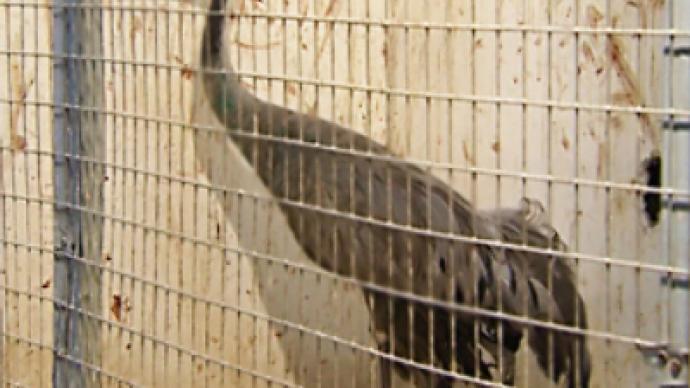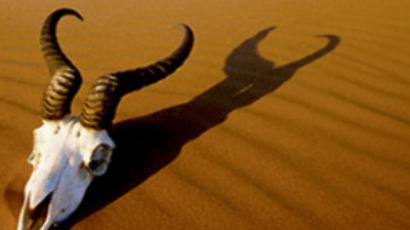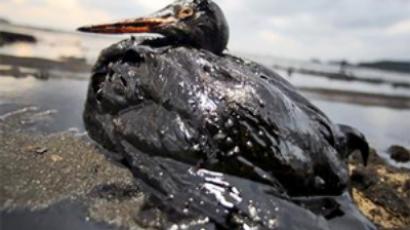A bird in the hand

The harsh winter of the Moscow region could have proved deadly for this crane. But he was saved from the snowy marshes on Christmas day by a local resident.
A broken wing prevented him from migrating southwards together with his flock. It was the date of the crane’s rescue which gave him his unusual name – Merry Christmas. Now he has been handed over to the “Green Parrot” ornithology clinic.
Although he may never see the earth from a bird’s eye view, Merry Christmas will receive all the care he needs. Vladimir Romanov, the head ornithologist at the “Green Parrot” clinic, told RT about the crane’s miraculous rescue and potential future.
“A visitor to our birds’ hospital brought this crane to us after it failed to migrate with its flock as cranes here normally do – in September-October,” Romanov said.
“This one could not because of its upper arm – and fractures to its forearm, which developed into a tragic situation as the crane had to feed on crops left on the field after harvesting.”
The crane is still very weak, even after spending several weeks under the watchful eyes of ornithologists.
“For now, we are not operating on the bird for the simple reason that the bird is very weak and not ready for it,” Vladimir Romanov told RT.
“Our primary goal now is to help it regain its strength and cure all other potential infections and parasites it may have. Then we can start reconstructing the bones. Unfortunately, we won’t be able to help him regain the full use of his wing,” he added.
Now, Merry Christmas is easy-tempered. He calmly lets the clinic staff carry out all the necessary medical procedures. They take blood, give the bird injections and use antiseptic spray on his wounds. But this placidity is a novelty.
“When we first got him, he was very restless, hit against walls and was completely wild. Now, he is a bit calmer because he sees that we take care of him and give him food,” the ornithologist said.
The crane needs to get used to people and Vladimir Romanov together with his staff are taking all the necessary steps to help the bird adapt. Merry Christmas’ broken wing will leave him unable to fly for the rest of his life, so he will have to spend it surrounded by people.
Foundlings such as Merry Christmas are not a rarity at the “Green Parrot” ornithology clinic. Every day, around 15 wild birds are brought here by local residents in addition to pets, and all of them need medical attention. Crows, parrots and storks are all taken care of completely free of charge.
“Some of them get shot. Others fly into electricity cables, often breaking two wing bones in the process… Some of the birds need therapeutic care instead of surgery as they suffer from infections, parasites or dehydration,” Romanov explained.
Some of these birds are released into the wild after treatment; others will be handed over to private collections and zoos. As for Merry Christmas, his winter miracle will continue: after he regains his strength, he will be relocated to a birds’ nursery where he will be able to live a life close to nature and, hopefully, multiply.














